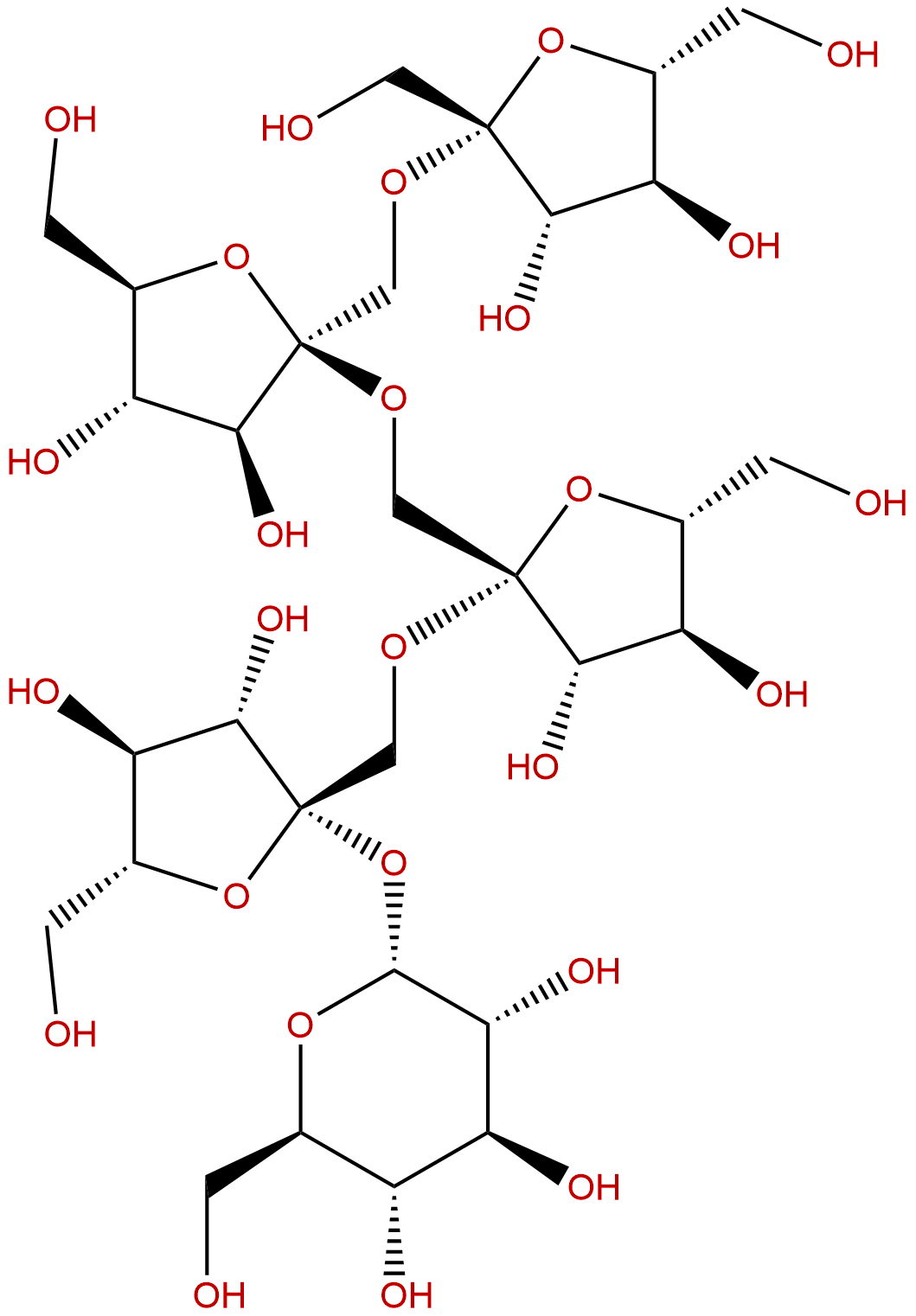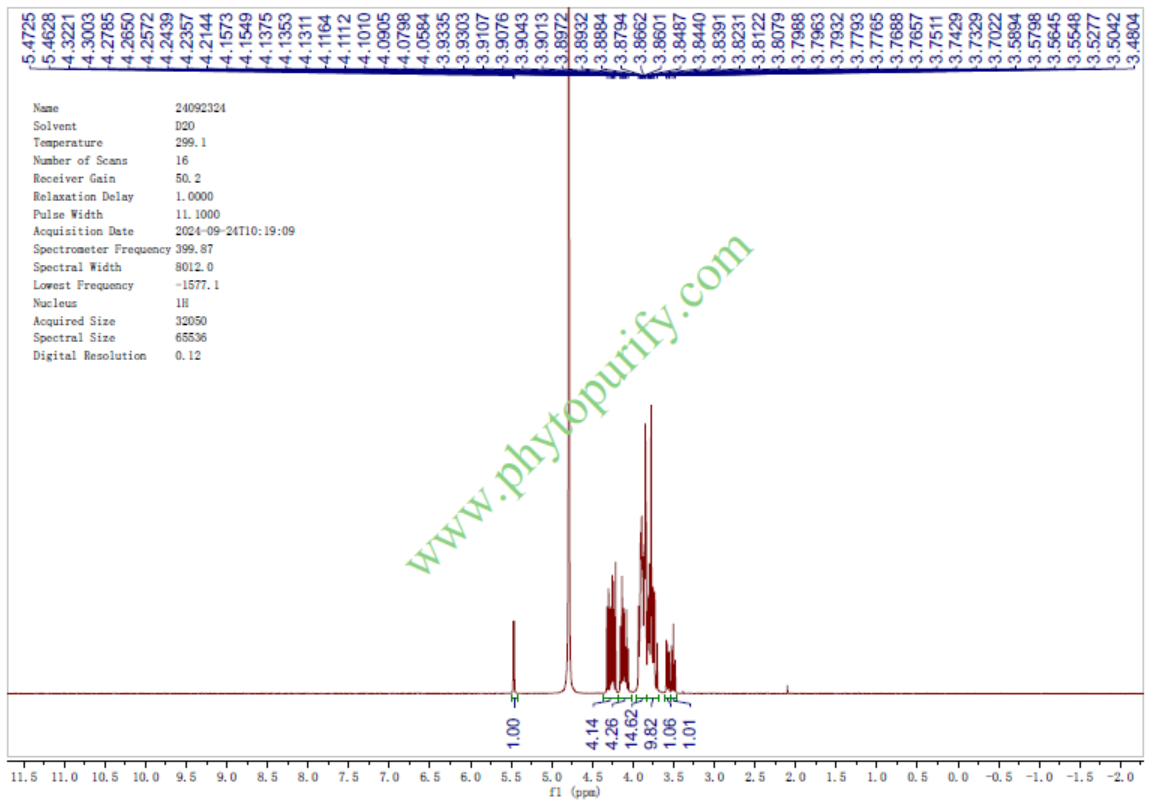
1F-FructofuranosylnystoseCAS No.:59432-60-9
|
||||||||||
 |
|
|
||||||||

| Catalogue No.: | BP3715 |
| Formula: | C30H52O26 |
| Mol Weight: | 828.72 |
Product name: 1F-Fructofuranosylnystose
Synonym name: FRUCTOSYLNYSTOSE; 1,1,1-Kestopentaose
Catalogue No.: BP3715
Cas No.: 59432-60-9
Formula: C30H52O26
Mol Weight: 828.72
Botanical Source:
Physical Description:
Type of Compound:
Purity: 95%~99%
Analysis Method: HPLC-DAD or/and HPLC-ELSD
Identification Method: Mass, NMR
Packing: Brown vial or HDPE plastic bottle
The product could be supplied from milligrams to grams. Inquire for bulk scale.
We provide solution to improve the water-solubility of compounds, thereby facilitating the variety of activity tests and clinic uses.
For Reference Standard and R&D, Not for Human Use Directly.
Description:
Reference standards.
References:
Front Plant Sci. 2015 Jun 9;6:395.
Fructans and other water soluble carbohydrates in vegetative organs and fruits of different Musa spp. accessions.
The water soluble carbohydrates (WSC) glucose, fructose, and sucrose are well-known to the great public, but fructans represent another type of WSC that deserves more attention given their prebiotic and immunomodulatory properties in the food context. Although the occurrence of inulin-type fructo-oligosaccharides (FOS) was proposed in the fruit of some banana accessions, little or no information is available neither on the exact identity of the fructan species, nor on the fructan content in different parts of banana plants and among a broader array of banana cultivars.
METHODS AND RESULTS:
Here, we investigated the WSC composition in leaves, pulp of ripe fruits and rhizomes from mature banana plants of 11 accessions (I to XI), including both cultivated varieties and wild Musa species. High performance anion exchange chromatography with integrated pulsed amperometric detection (HPAEC-IPAD) showed the presence of 1-kestotriose [GF2], inulobiose [F2], inulotriose [F3], 6-kestotriose and 6G-kestotriose (neokestose) fructan species in the pulp of mature fruits of different accessions, but the absence of 1,1-nystose and 1,1,1-Kestopentaose and higher degree of polymerization (DP) inulin-type fructans. This fructan fingerprint points at the presence of one or more invertases that are able to use fructose and sucrose as alternative acceptor substrates. Quantification of glucose, fructose, sucrose and 1-kestotriose and principal component analysis (PCA) identified related banana groups, based on their specific WSC profiles.
CONCLUSIONS:
These data provide new insights in the biochemical diversity of wild and cultivated bananas, and shed light on potential roles that fructans may fulfill across species, during plant development and adaptation to changing environments. Furthermore, the promiscuous behavior of banana fruit invertases (sucrose and fructose as acceptor substrates besides water) provides a new avenue to boost future work on structure-function relationships on these enzymes, potentially leading to the development of genuine banana fructosyltransferases that are able to increase fructan content in banana fruits.
HPLC of 1F-Fructofuranosylnystose

HNMR of 1F-Fructofuranosylnystose
